
Environments and Processes Observed in the Modern Mississippi Delta
The main environments of deposition in the Mississippi delta are:
 |
A satellite photo of the Mississippi delta. Shows the radiating distributaries of the current delta. The light area is the plume of river water (rich in suspended sediment) that floats out onto the denser (due to salinity) waters of the Gulf of Mexico. |
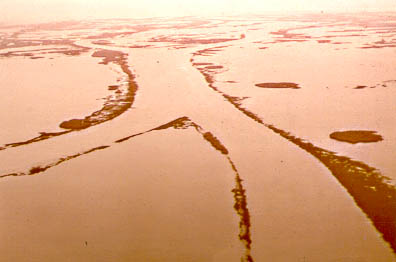 |
Distributary channels on the Mississippi delta. The delta is flooded, but the natural levees along the distributaries are still visible. |
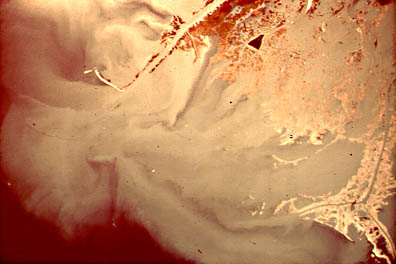 |
A satellite photo of one of the distributary mouth regions (southwest Pass). The delta is "leaking" sediment bearing river water from numerous smaller outlets as well. |
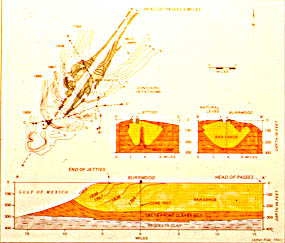 |
A map of Southwest Pass that shows progradation (outbuilding) of the river mouth over the past 200 years. Sediment dumping at the river mouth has extended the river mouth outward by about 12 kilometers between 1764 and 1959. That is a growth rate of about 60 meters or 180 feet per year. The sediment that piles up at the river is called the distributary mount bar. |
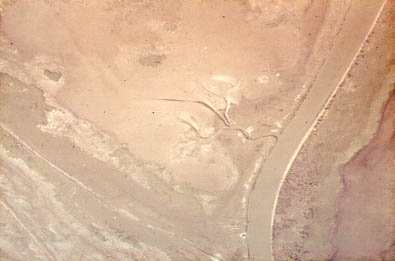 |
The breach of the levees of a distributary channel allows sediment to spill into an adjacent interdistributary bay (shallow body of water connected to the sea). This sediment forms sort of a miniature delta on a delta, and is called a crevasse splay. |
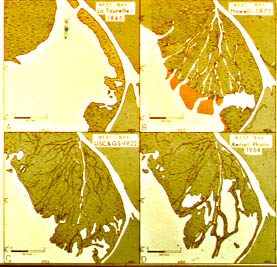 |
The history of a crevasse splay delta (West Bay, 1845-1958). In 1845 a levee breach led to the formation of a crevasse splay delta into the adjoining bay. In 1922 (lower left) the crevasse splay delta had reached its largest extent and the channels started to clog with sediment. The lack of continued sedimentation allowed compaction of the muddy sediments to take over and gradually the newly created land is sinking beneath the waterws of the bay again. |
 |
Turbid and sediment-rich water that comes out of Southwest Pass is not mixing with the saline (darker) waters of the Gulf of Mexico. It flots on top as a sediment-rich plume (see below). |
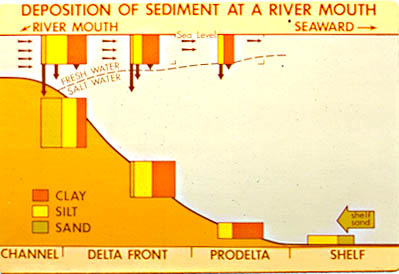 |
As the river waters float out onto the Gulf waters, first the coarser material (sand) and gradually also silt and clay settle out from the freshwater plume. As a result, as we move outward from the river mouth, the bottom sediments get finer and finer (prodelta clays). Thus, as the delta progrades, it builds up a sediment body that is fine grained at the base and has the coarsest sediment at the top. |
 |
Delta Switching: After a delta builds out far enough, the slope of the distributary channels is so low, that they fill up with sediment (lack of energy to move sediment), and the river seeks a new, shorter path to the ocean. Then a new delta lobe is built out besides the old, abandoned one, and so forth. The picture shows a series of seven delta lobes that were constructed by the Mississippi since the end of the last ice age (about 10,000 years ago). |
The Mississippi Delta is not only a very interesting place to visit for geologists, it is also considered the cradle of the Blues. The background music of this page is a piece called "Dimples" by legendary blues musician John Lee Hooker.